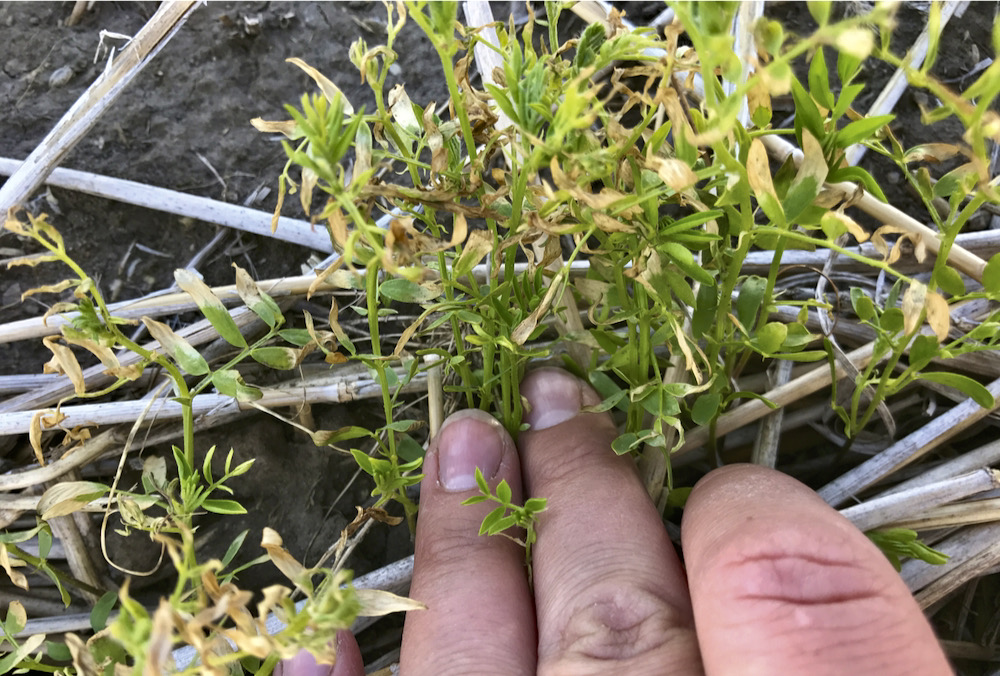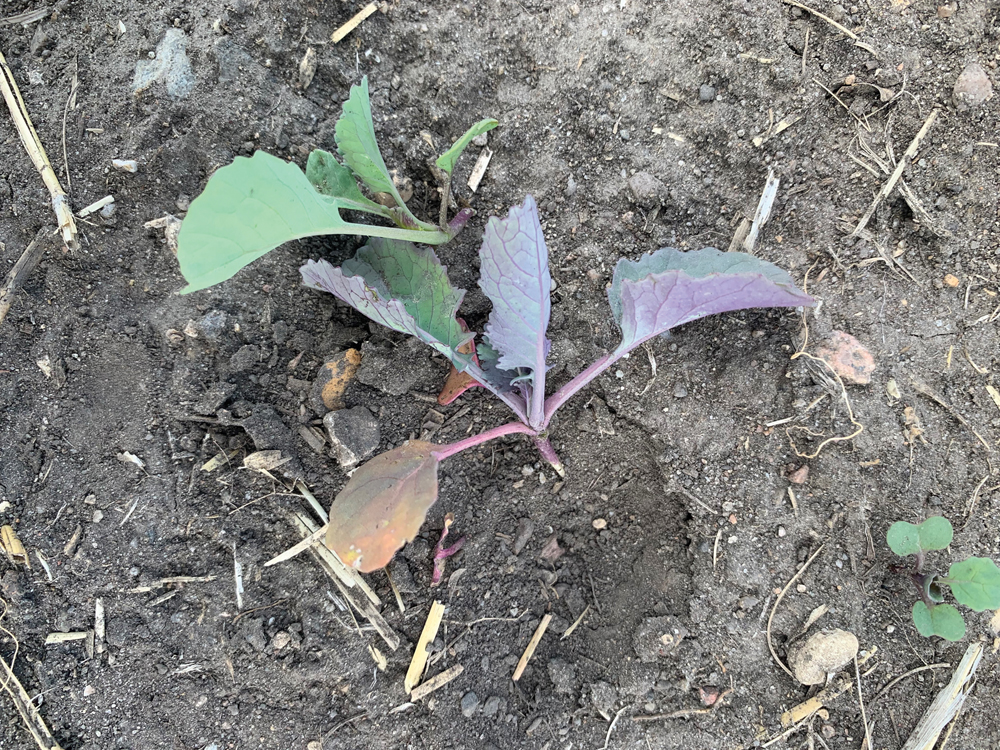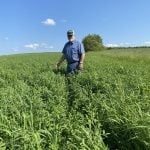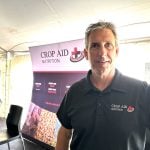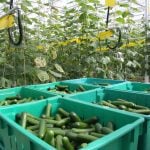
It was early August when I got a call from Peter, a mixed grains farmer at Claire, Sask. Peter, who grows Hard Red Spring wheat, Soft White wheat, oats, canola, barley, canaryseed and occasionally green peas on his 3,500 acre spread, had a serious problem with his canaryseed crop.
He was distressed to see that the tops of the plant heads throughout his canaryseed field were all turning white. “I don’t know what’s going on but I’m afraid the crop is going to be a total disaster,” Peter said.
I paid Peter a visit and he took me out to the affected field. Sure enough, I could see that the top one-third of the plant heads in the canaryseed were going white and they were also not filling properly. Peter said he first spotted the first discoloured heads a few days previously, and now there were affected plants throughout the field.
Read Also
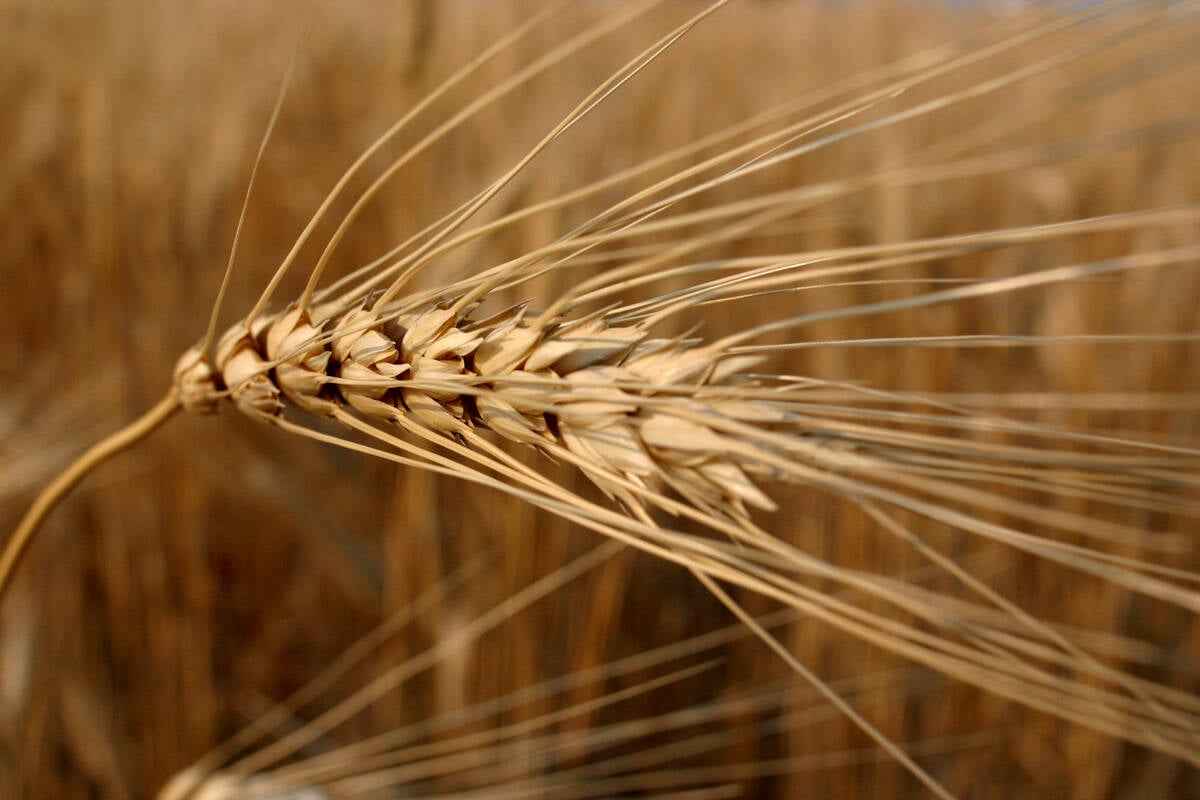
Ergot resistance may open new doors for durum on Prairies
Canada’s first durum variety classified as resistant to ergot may expand the wheat’s acreage in parts of Western Canada where it’s not been typically grown.
I had a closer look to see some parts of the field were more adversely affected than others. The symptoms, however, were evenly spread throughout the entire crop. When I inquired about growing conditions that spring and summer, Peter informed me the weather had been close to ideal in terms of temperatures and moisture.
After questioning Peter about his herbicide program, it was evident that he had applied the right amount of the right product, at the right time and in the right conditions. Jared also informed me that he’d followed his normal fertility program for the crop, and had never had a problem with his canaryseed before.
Crop Advisor’s Solution: Chloride deficiency bleaches canaryseed heads
I was told growing conditions had been close to ideal that spring and summer, ruling out weather as a possible culprit, and a discussion of Peter’s herbicide program revealed no clues either.
However, the fact that the bleached canaryseed heads were evenly spread throughout the crop led me to suspect that a nutrient deficiency was to blame. I ordered plant tissue tests that revealed the canaryseed was low in potassium but more importantly, was also low in chloride.
Due to ongoing research, chloride is known to be directly associated with filling in canaryseed. If the crop is under stress or experiencing high yield pressure, more chloride is required for the plants to fill sufficiently. The canaryseed crop at Peter’s farm, like most others in the region, was undergoing unusually high yield pressure that season.
In addition to a chloride deficiency, the extreme bleaching in Peter’s canaryseed was likely caused in part by blasting. Even though growing conditions had been close to ideal and there was little evidence of this problem in other crops, canaryseed is a shallow-rooted crop and more prone to floret blasting than other crops grown in the area.
At this point in the season, Peter’s canaryseed crop was close to harvest and there was little to be done to correct the problem. There are no foliar options for chloride since this kind of application can cause leaf damage.
Going forward, the best and most practical way for Peter to avoid a chloride deficiency in his canaryseed would be to add more potash — which is about 47 per cent chloride — to his fertility program. Soil tests can help canaryseed producers like Peter determine their chloride requirements each cropping year, and develop their fertility programs accordingly.
Olivia Denomie is an area marketing representative with Richardson Pioneer Ltd. at Wadena, Sask.






